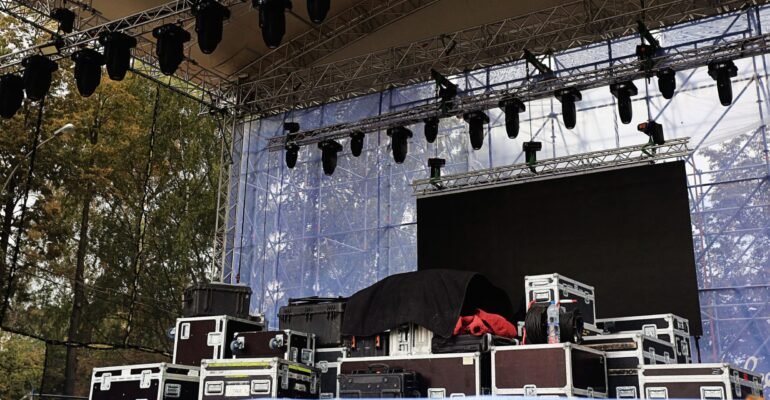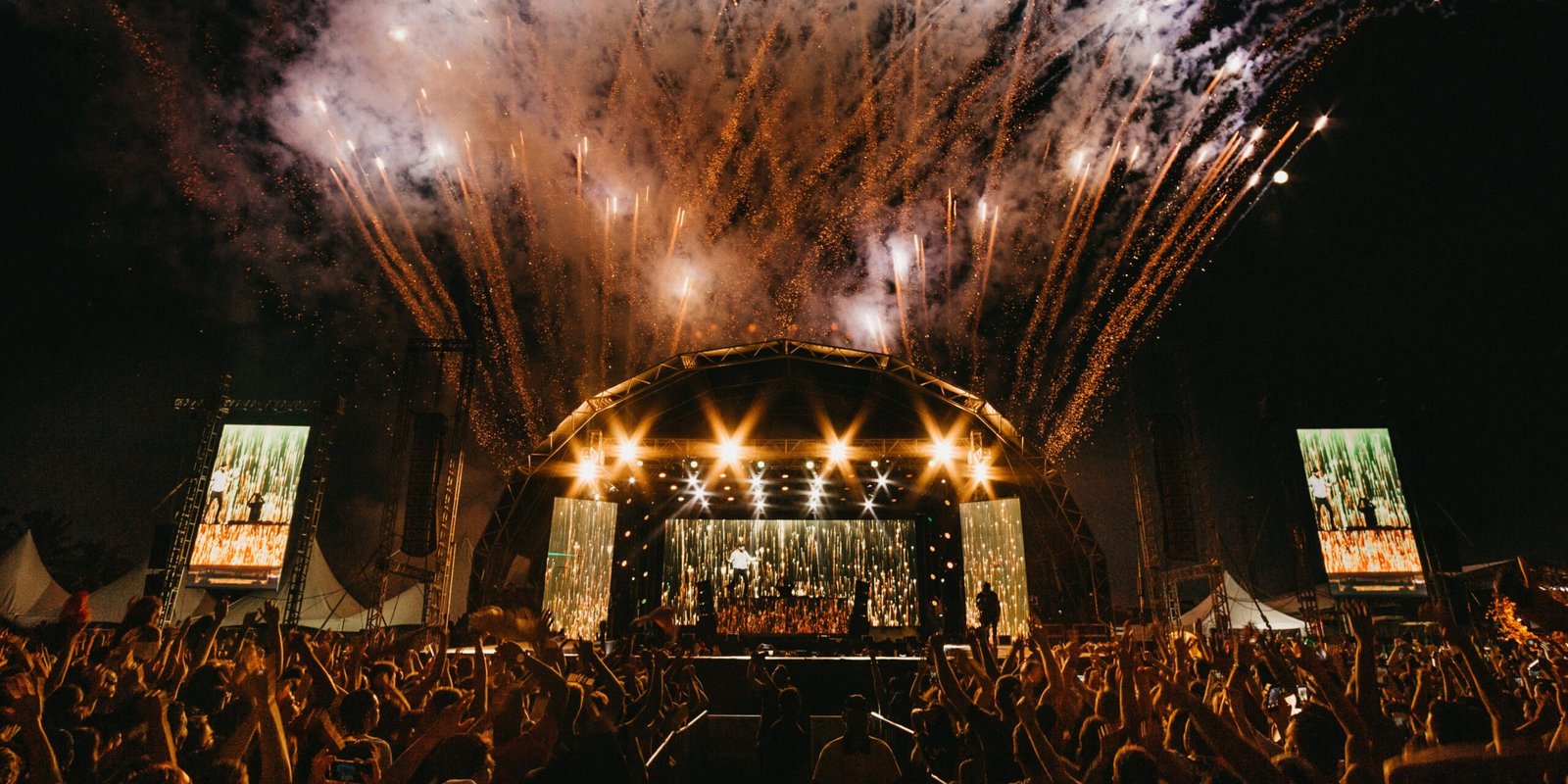Behind the Scenes of Virtual Concerts
June 24, 2024 2024-06-26 9:16Behind the Scenes of Virtual Concerts

Behind the Scenes of Virtual Concerts
Introduction: Behind the Scenes of Virtual Concerts
The world of live music has undergone a seismic shift with the advent of virtual concerts. No longer bound by geographical limitations, artists can now reach audiences across the globe with just a click. But what really goes on behind the scenes of virtual concerts? How do artists and production teams create an immersive experience that can rival in-person events? In this blog, we will explore the intricacies and innovations that power these digital performances, providing a glimpse into the future of live music.
The Technological Backbone

At the core of any virtual concert is a robust technological infrastructure. High-speed internet, advanced streaming platforms, and cutting-edge software are just the tip of the iceberg. Behind the scenes of virtual concerts, a team of tech-savvy professionals works tirelessly to ensure seamless streaming. They handle everything from encoding the live feed to managing latency issues, ensuring that fans experience the concert without interruption.
Key Technologies:
- High-Definition Cameras: Capture the performance in stunning detail.
- Audio Equipment: Professional microphones and soundboards ensure crystal clear sound.
- Streaming Software: Platforms like OBS Studio and Streamlabs are used to broadcast the concert.
- Internet Connectivity: High-speed internet is crucial to prevent lag and buffering.
The Role of Augmented Reality (AR) and Virtual Reality (VR)
One of the most exciting developments behind the scenes of virtual concerts is the use of AR and VR. These technologies create an immersive experience, making fans feel like they are part of the show. Artists are experimenting with virtual stages, 3D visual effects, and interactive elements that engage viewers in unprecedented ways.
For instance, Travis Scott’s virtual concert in the game Fortnite showcased the potential of these technologies. Fans could navigate a virtual world, experiencing the concert from different angles and interacting with the environment. This blend of gaming and live music opened new avenues for fan engagement.
Lighting and Visual Effects
Lighting plays a crucial role in setting the mood and enhancing the visual appeal of a concert. Behind the scenes of virtual concerts, lighting designers use sophisticated software to synchronize lights with the music. This coordination creates dynamic visual effects that captivate the audience.
Moreover, green screens and digital backdrops allow for a variety of visual settings without the need for physical sets. This flexibility enables artists to perform in fantastical environments that would be impossible to create in a traditional concert setting.
The Importance of Sound Engineering
While the visual elements are vital, the auditory experience is paramount in a virtual concert. Sound engineers work behind the scenes to ensure the highest audio quality. They balance the instruments, manage live mixing, and use spatial audio to give depth to the sound. This meticulous attention to detail ensures that the music resonates just as powerfully as it would in a physical venue.
Interactive Elements and Fan Engagement
One of the significant challenges behind the scenes of virtual concerts is maintaining audience engagement. To address this, artists and producers incorporate interactive elements into their shows. Real-time chat, virtual meet-and-greets, and social media integration allow fans to interact with the artist and each other.
For example, BTS’s “Bang Bang Con: The Live” featured a multi-view experience where fans could choose different camera angles. Additionally, interactive polls and Q&A sessions made the concert feel more personal and engaging.
The Business of Virtual Concerts

Behind the scenes of virtual concerts, there is also a complex business model at play. Monetizing virtual concerts involves various strategies, from ticket sales and merchandise to sponsorships and partnerships. Platforms like Veeps and Moment House have emerged, providing artists with tools to sell tickets and merchandise directly to fans.
Moreover, virtual concerts offer new revenue streams through digital goods and exclusive content. Limited edition NFTs (non-fungible tokens), for example, allow fans to own a piece of the concert, whether it’s a unique digital artwork or a rare recording.
Case Studies: Successful Virtual Concerts
Billie Eilish’s “Where Do We Go? The Livestream”: Billie Eilish’s virtual concert was a masterclass in blending technology with performance art. With stunning visuals, interactive elements, and high-quality production, it set a new standard for virtual concerts.
The Weeknd’s TikTok Experience: The Weeknd’s virtual concert on TikTok was an interactive event that allowed fans to influence the show in real-time. This innovative approach demonstrated the potential of social media platforms in hosting large-scale virtual events.
Future Trends in Virtual Concerts
Looking ahead, the future of virtual concerts is bright and full of potential. Advances in technology will continue to enhance the quality and interactivity of these events. Here are some trends to watch for:
- 5G Technology: Faster internet speeds will reduce latency and improve the streaming quality of virtual concerts.
- More Sophisticated AR/VR Experiences: As AR and VR technologies evolve, virtual concerts will become even more immersive and interactive.
- Hybrid Events: Combining in-person and virtual elements will offer a flexible and inclusive concert experience.
- Blockchain and NFTs: Blockchain technology will enable new forms of digital ownership and monetization in the music industry.
Conclusion
Behind the scenes of virtual concerts lies a world of innovation, creativity, and technological prowess. These digital events are not just a temporary solution to the challenges posed by the pandemic but a glimpse into the future of live music. As technology continues to evolve, virtual concerts will offer ever more immersive and engaging experiences, bringing fans closer to their favorite artists than ever before. Whether you’re a music lover, a tech enthusiast, or an industry professional, the world of virtual concerts is an exciting space to watch.
Related Posts
How to Learn Western Singing in India
Best Opera Teachers in the world
music-degrees-in-india
Build a Home Recording Studio on a Budget
Search
Categories




